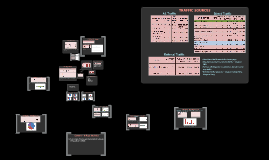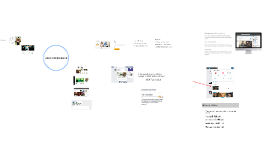CVI Website Analytics
Transcript: Frequency of Data Collection Data Sources and Parameters Data collection for analytics occurs at varying frequencies, often daily or in real-time, to ensure timely insights. Consistent monitoring enables swift adaptation to changing user behavior and website performance trends. Website analytics gather data from diverse sources including user sessions, referral links, and geolocation data. Key parameters such as page views, session duration, and unique users are essential for tracking engagement and optimizing content. Tools Used for Analytics Popular analytics tools such as Google Analytics, Adobe Analytics, and Matomo provide insights into website traffic and user interaction. These platforms offer features like real-time reporting, segmentation, and customizable dashboards to monitor essential metrics. Data Collection Methods Effective analytics relies on robust data collection methods, utilizing various tools and sources to gather insights on website performance and user behavior. Understanding these methods ensures that the analytics process is comprehensive and reflective of actual trends. Objectives of the Analysis The primary objectives of the CVI website analytics analysis are to assess website performance, identify key traffic sources, and understand user engagement patterns. This information is vital for effective marketing strategies and improving user experience outcomes. Overview of CVI's Digital Presence CVI maintains an active online presence across various platforms, including its official website and social media channels. This multi-channel approach aims to engage diverse audiences and drive traffic to the website for various services. Content Performance Content performance metrics show that blog articles receive the highest traffic, contributing to 40% of total views. Top-performing articles focus on industry insights, generating substantial engagement and shares across social media. CVI Website Analytics Behavior Trends Areas for Improvement User behavior reveals that 70% of visitors come through organic search, with a session duration averaging 3 minutes. The primary navigation paths indicate that users regularly engage with the blog section, underscoring its relevance. Opportunities for improvement include reducing bounce rate, currently at 50%, and optimizing loading times, which exceed 4 seconds for 30% of pages. Enhancing mobile responsiveness is crucial as mobile traffic makes up 55% of total visits. Audience Demographics The CVI website attracts a diverse audience, with 60% of visitors aged 25-34. Notably, 55% are returning visitors, indicating strong user loyalty. The gender distribution is nearly equal, suggesting broad appeal across demographic segments. Findings and Insights Importance of Website Analytics This section highlights the critical findings from the CVI website analytics, emphasizing audience demographics, behavior trends, content performance, and identifying areas for improvement. Introduction to CVI Website Analytics Website analytics provide insights into user behavior, traffic sources, and conversion patterns. These metrics help businesses identify strengths and weaknesses, fostering data-driven decision-making to enhance user engagement and overall performance. Website analytics is crucial for understanding visitor behavior, improving user experience, and optimizing digital strategies. At CVI, leveraging analytics allows for informed decisions to enhance online presence and performance. Insights and Performance Metrics Monitoring and Evaluation Strategies Future Analytics Planning Implement a robust monitoring framework to assess the effectiveness of website traffic and engagement tools. Utilize A/B testing for continuous improvement of content and design based on user interactions and preferences. Establish a quarterly analytics review to align goals and assess performance against KPIs, adjusting strategies as needed. Determine advanced analytics tools and methodologies to better predict trends and user behavior. Conversion Rates Bounce Rates Bounce rates indicate the percentage of visitors who leave the site after viewing only one page. A high bounce rate may suggest irrelevant content or poor site navigation that fails to engage users adequately. Conversion rates reflect the percentage of visitors taking desired actions, such as filling out forms or making purchases. This metric helps gauge the effectiveness of marketing strategies and user journey efficiency. User Engagement Metrics User engagement metrics include average session duration, pages per session, and interaction rates. High engagement signals compelling content, while low engagement could indicate the need for content optimization or improved user experience. Traffic Overview Key Metrics Analyzed Analyzing traffic patterns shows the number of site visitors and their origin. High traffic volume indicates effective outreach, while traffic sources reveal the effectiveness of marketing efforts,

















